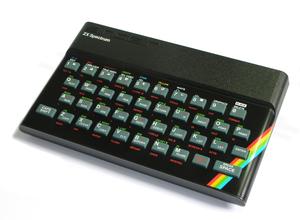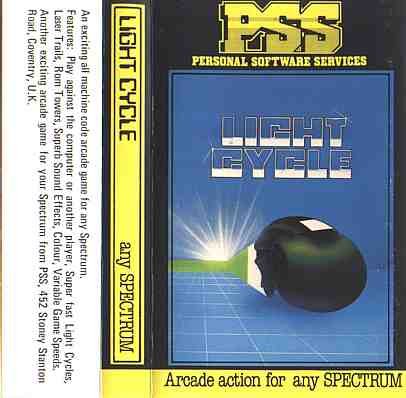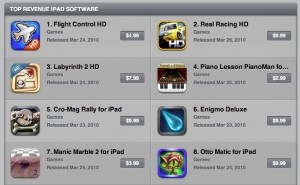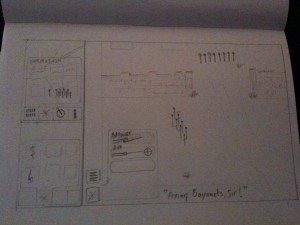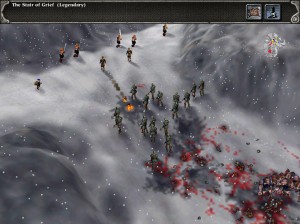…I learned from writing my own. Lewis Pulsipher at GameCareerGuide writes that All I Really Needed to Know About Games I Learned from Dungeons & Dragons He has some core points which apply to any game but especially one which involves multiple users (a Massively Multiplayer Online Game) for example. As a designer: You don’t … Continue reading “All I needed to know about games…”
…I learned from writing my own.
Lewis Pulsipher at GameCareerGuide writes that All I Really Needed to Know About Games I Learned from Dungeons & Dragons
He has some core points which apply to any game but especially one which involves multiple users (a Massively Multiplayer Online Game) for example.
As a designer:
You don’t need high-level technology to make an “immersive” game.
For human/psychological games (as opposed to computer-mediated challenge games), players enjoy the journey, not the destination.
Some people like to be told stories; others like to make their own.
The objective is to make the players think their characters are going to die, not to kill them.
We all like to improve.
User-generated content enriches a game immensely. (In this case, adventures, monsters, classes, etc.)
Lewis continues:
As a player:
It’s more fun with more than one person.
Cooperation is required for survival.
Think before you leap.
Get organized!
Don’t run headlong where you’ve never been.
Keep track of the stuff you’ve got; otherwise you may forget something that could save your butt.
Always have a viable “Plan B”.
Always have a way out.
Don’t depend on luck!
If your game can take into account all of the above points then you’re well on your way to developing a game that I’d like to play. Nintendo shows us that we don’t need the most cutting edge graphics to make a game that truly involves the players – in fact – the cartoony lack of realism in the games on the Wii platform serve to make it more memorable rather than less when compared to the Hi-Def Not-Quite-Realism that you find on the PS3 and XBOX.
For myself, the ‘fun’ in the game has always been in the story and there is some pseudo-theory around this, the concepts of ‘gamist‘, ‘simulationist‘ and ‘narrativist‘. I identify with the latter category, being more interested in the story, in the interactions and in the ‘soft’ outcomes. In contrast, a simulationist will strive to have the most realistic ‘reality modelling’ experience possible. They might enjoy Call of Duty more than Left4Dead or Halo because the content is ‘realistic’. Zombies and aliens, despite being fun, are not real. Lastly, the gamist is in it for the game. For the challenge, for the achievements and perhaps even competitively for the win. There’s nothing wrong with being in a category and it doesn’t make what you enjoy into BadWrongFun and it’s perfectly possible to jump between categories depending on the game itself. For example, while playing “Infamous”, I was in it for the story and I found “Prototype” to be an unenjoyable button-masher aimed at Gamists but when playing any first person shooter against other humans, I tend to be a determined gamist, it’s all about the challenge and all about the winning. Similarly I want a racing game to have realistic drift physics even if the content is all about superfast floating flying machines armed with missiles and if I die, I just come back to life. It’s a joint gamist/simulationist experience for me.
Games are more fun when you’re not alone and I find the co-operative balance of games like Left4Dead to be immensely compelling because it’s the first game I’ve ever played which must be played cooperatively. Yes, there’s a certain mechanics to making sure you have the right equipment and you know the way in a game like that but similarly the ‘chaos’ introduced by other humans in the game is just the very reason I play – especially as they, through communication, can add unobvious twists to the game itself (like playing Call of Duty using only knives or Left4Dead using only pistols). My love of the story means my motivation to have the right equipment and ensure effective communication with the team is entirely because there’s nothing more frustrating than having to play the same ‘level’ again and again due to the mechanics of a game being poorly thought out. I’ve experienced this mostly with console games which require you to have twitch fingers as well as intimate knowledge of which button has a circle and which has a triangle. The fact this ‘out of game’ knowledge is required, completely jolts me out of immersion in the plot and reminds me I’m mashing buttons on a game controller.
An aside to this is the necessity of controlling player character death. There’s nothing more frustrating than your character dying because her avatar edged a pixel over some mathematical value which dictates whether the character stands or falls. At least, again in Left4Dead, some designers have thought about this. It’s not perfect but it beats the extremes of either falling when your pixels are 51% past the border or being able to stand in mid air because one of your pixels is still touching the edge of the cliff. Always err on the side of playability – as it says above, your job is to inspire the fear of character death in the players, not set out to actually kill them. Don’t punish the player for the poor edge detection algorithm in your game engine or for touching something that doesn’t look dangerous in your description or image.
Don’t miss the point about user-generated content. Some companies see Open Source as being a method of saving on developer time or a political statement designed to attract a certain demographic. I have long been of the opinion that you should let people make up their own stories. Being too restrictive here means there’s no Harry Potter RPG and there are only videogames for the franchise which permit a very limited range of activity. The potential content is controlled, closed, censored and choked. Chairman Mao Zedong of China said:
“Letting a hundred flowers blossom and a hundred schools of thought contend is the policy for promoting progress in the arts and the sciences and a flourishing socialist culture in our land.”
before doing his own controlling, closing, censoring and choking.
Whether or not you think he was using this to entice dissidents out of hiding is not what I’m here to debate but what I will say is that this school of thought is pretty much responsible for Twitter and Youtube. What can be more fun than seeing your creation being used in new and innovative ways. Back a hundred years ago in 1996 when I produced my first book, I loved seeing that someone has written extra content or modified my rules – because it meant they read them. I was often asked to explain my design decisions and why several rules were labelled as ‘optional’ and entertained by someone else’s take, someone else’s story using the background and content I had originated.
I’d love to hear some opinions on what is your favourite game and why. Do you identify most with Gamist, Narrativist or Simulationist (also labelled Narratology and Ludology in Aphra Kerr’s book: The Business and Culture of Digital Games.)
